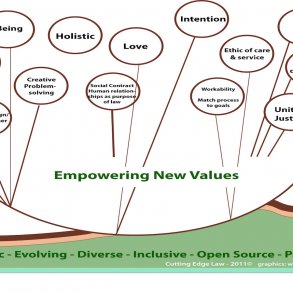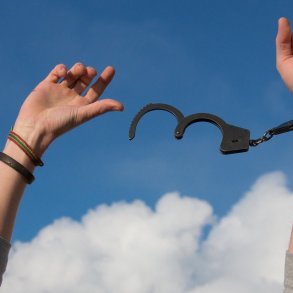By Sahana Chattopadhyay originally published on medium.com. This is Part 2 of her blog Re-imagining Organizations as Ecosystems.
Part 1 of EE Magazine’s republication of the original article is here.
I believe that the capacity that any organization needs is for leadership to appear anywhere it is needed, when it is needed. ~Margaret Wheatley
In my previous post, I described some of the paradigms and constructs that have to be dismantled for organizations to step out of the Industrial Era-inspired machine metaphor. That era is gone, and the metaphor has outlived its use. Today, we are in a uber-networked world characterized by complexity, uncertainty, and ambiguity. To thrive in these times, organizations need to be adaptive, responsive, emergent, self-organizing, and co-creative—all characteristics of living systems.
Organizations are also uniquely placed to have a massive impact toward building “a more beautiful world.” Because they are platforms of convergence where individuals come together, the Narratives, Metaphors, and Purpose that drive organizations can exert tremendous influence on how people connect, collaborate, and co-create.
These unseen and intangible influences create the field which drives organizational behavior. Thus, to reinvent organizations, we need to re-imagine these underlying constructs — new narratives, new metaphors, and a shared Evolutionary Purpose.
I have described a few of these shifts in my earlier post, and others include these:
Shift from optimization to human transformation
One of the sessions at the Global Peter Drucker Forum in 2018 was around Time to Re-engage with Humanities — cultivating what makes us human. Today’s generations are not interested in only making profit for some faceless shareholders. They are interested in and wish to participate in creating a positive impact, which requires a new type of awareness and consciousness.
To become a conscious organization is a deliberate choice, which then leads to many small, thoughtfully undertaken actions and decisions over a period of time. These have a cumulative and a gradually percolating effect that can shift the trajectory of an organization.
This shift calls for transformation at a deeper level of engagement — with self, others, and the organizational purpose. It’s a subtle and an inside-out process that requires a safe container to blossom. Leadership today involves helping organizations to make this shift.
Shift from Machine to an Ecosystem View
The mechanistic model of organizations and Cartesian form of management are no longer viable for a complex, volatile, and uncertain era. Striving for linear, limitless growth isn’t realistic anymore — in fact, it’s dangerous.
To view an organization as an ecosystem is to realize that ecosystems achieve stability through change, which is a fundamental characteristic of complex living systems. And to understand that change cannot be managed. Change and chaos are an essential part of the the adaptive cycle. In order to be resilient and design for positive emergence, organizations need to embrace and adopt this knowledge, and leaders need to become cultivators and nurturers of ecosystems.
Shift from “action orientation” to “being orientation”
I am not advocating passivity or suggesting falling into inaction. I am suggesting that leaders need to shift from an action-oriented mindset (a trait much admired in organizations) to a being orientation — this means to pay attention to the Source from where the action is originating. Is the action coming from a source of fear, a need to look good, a desire to beat competition, a craving to gain accolade? Or is it coming from a place of deeper truth, wisdom, and insight?
This ability to be aware of one’s own intention and source of one’s actions is a vital trait for those who wish to take their organizations on the path of transformative change. A “being orientation” calls for some of the traits I wrote about in my earlier post.
I believe as organizations start behaving more like collectives of communities, and like living ecosystems, power will get distributed, decentralized, and re-imagined. Positional power will give way to a natural flow. The desperation that often drives behaviors like competitiveness, abusing of hierarchy and position, protecting one’s turf, and so on will diminish.
These are often outcomes of the concentration of power and privilege at the top, which has a cascading effect of creating a feeling of helplessness and powerlessness at the bottom of the pyramid. Taking an ecosystem perspective can help us shift from the mechanistic Narrative of Separation to one of Connectedness and Co-creation.
An effective organization is a community of human beings, not a collection of human resources… Henry Mintzberg
 Sahana is a Coach, Facilitator, Speaker, and Writer with a background in designing workplace learning experiences, and Organization Development.
Sahana is a Coach, Facilitator, Speaker, and Writer with a background in designing workplace learning experiences, and Organization Development.
Catalyst | Community Steward | Scribe to an emerging era… Exploring new ways of Being | Lover of mountains, rivers, forests, & seas.
Her passion is to help individuals, teams, and organizations hold space for emergence, and move towards their fullest potential. Reach her at [email protected]
Featured image/graphic link added by Enlivening Edge Magazine. Image by
Paragraph spacing added by Enlivening Edge Magazine.




